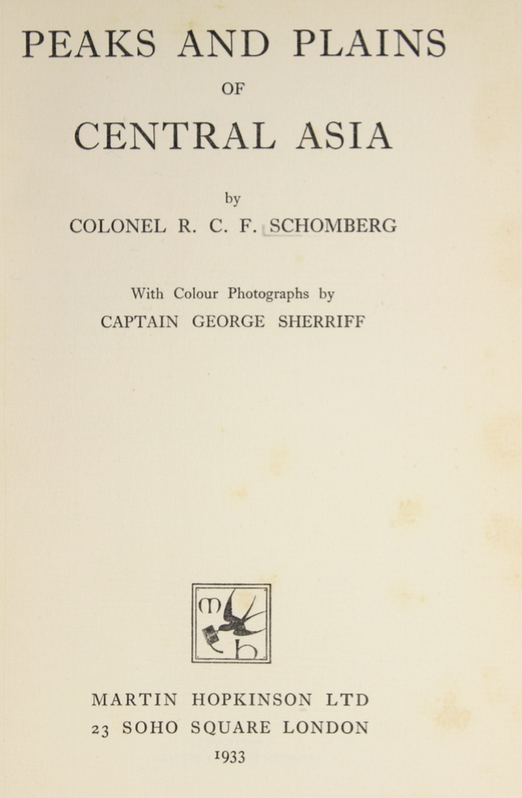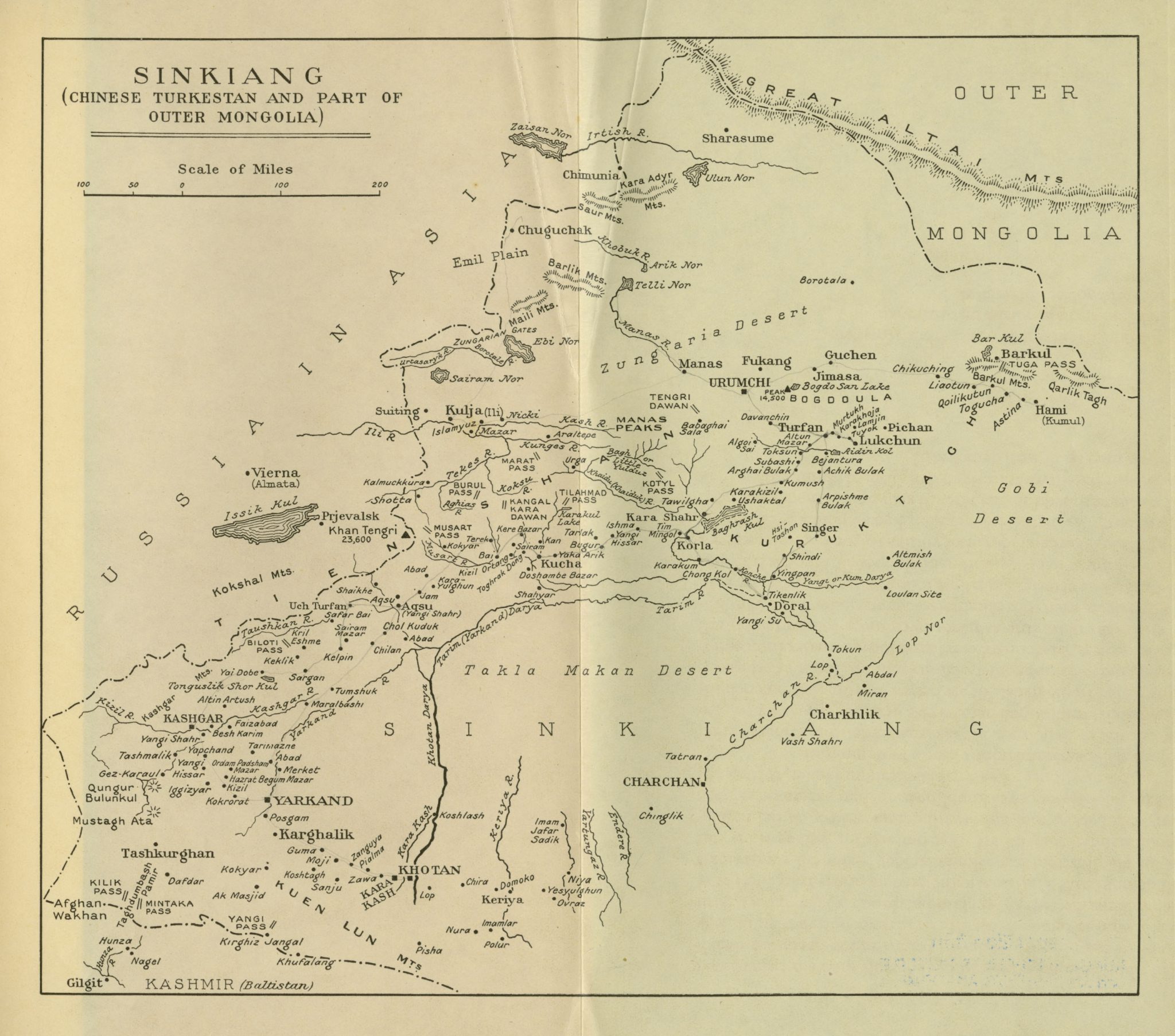Peaks and Plains of Central Asia
Reginald Charles Francis Schomberg
It is such a country and such a people that this book tries to describe; and as bustle and fluster are unknown in the leisurely land of Turkestan, our journey was slow and deliberate. Quick travel is mercifully still unknown there. As the climate was hot in summer and cold in winter, we travelled in the plains in the winter and in the hills in the summer. Distances were great, and conditions of weather, time and routes were often inconvenient, obliging us to retrace our steps and to cover the same tracks twice. (p. 14)
.
Summary
In Peaks and plains of Central Asia, Colonel R.C.F. Schomberg has documented two of his journeys carried out in Sinkiang in 1927-1929 and 1930-1931, respectively. The author writes about his impressions and thoughts while riding on horseback through and around places such as Kashgar, Aqsu, Kucha, Korla, Kulja, Urumchi, Turfan, Khotan and Yarkand, together with his traveling companions from before, the two servants from Hunza, Daulat and Abdulla, who were also with him in Between the Oxus and the Indus (1935). In order to avoid tedious courtesy visits and exaggerated hospitality, which he is quite weary of, Schomberg changes his routes on several occasions and discovers new and exciting paths in Sinkiang.
We had had enough of the town, and were glad to be on the road again. In a Turki town the European visitor has never a spare moment to himself; streams of visitors, who will not be denied, call at all hours. When not being visited, the foreigner is out visiting, so that a stay in a town is a most restless experience. (p. 174)
As political changes occur in Central Asia, traveling conditions change. Here Schomberg notes how Urumchi has changed since he was there last time: “The Governor had been murdered, his prime minister executed, and a good deal of tension and unrest had ensued. The city was under martial law…” (p. 122)
Besides a large map of Sinkiang in Appendix, two smaller maps of Sinkiang can be found on pp. 88f. Color photographs of Turki and Kirghiz women taken by Captain George Sherriff are to be found throughout the volume. Additionally, a glossary containing Turki words used in the book can be found on pp. 282f.
.
Details and comments
Swedish presence in Central Asia is also noted in Peaks and plains of Central Asia. In Urumchi Schomberg spends some time with Dr. Nils Ambolt from one of the expeditions headed by the much admired Sven Hedin. Furthermore, in Kucha Schomberg encounters “Fröken Lovisa Engvall, the Swedish lady doctor, who has lived many years in Kucha, and has done much good work there”. (p. 141)
.
Azize Güneş









